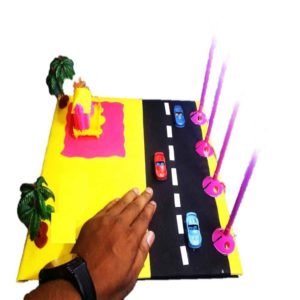Lemon Battery DIY Kit
Original price was: 499.00₹.299.00₹Current price is: 299.00₹.
The Lemon Battery DIY Kit offers an engaging way to explore electricity generation using simple materials like lemon juice, copper, and zinc plates. With basic components and easy assembly instructions, it enables users to understand the principles of battery technology through hands-on experimentation.
- No Branding.
- 100% working. Tested by S.R. Robotics.
- FREE Shipping.
- Description
Description
Description
The Lemon Battery DIY Kit introduces the fascinating concept of generating electricity using simple materials. This kit allows users to harness the power of lemon juice to create a functional battery and power an LED light. With easy-to-follow instructions and basic components, it provides an educational and hands-on experience in electricity generation.
Features:
- Educational: Provides an interactive way to learn about basic principles of electricity and battery technology.
- Simple Assembly: Includes all necessary components for building a lemon battery, making it suitable for beginners and educational purposes.
- Hands-On Experimentation: Encourages experimentation and exploration with different configurations to understand the factors affecting battery performance.
- Engaging Activity: Offers an engaging and fun activity for science projects, classrooms, and hobbyists interested in STEM subjects.
Components Included: (Lemons are not included in the kit)
- 4 Copper Plates: Serve as the positive electrodes in the lemon battery setup.
- 4 Zinc Plates: Act as the negative electrodes to complete the battery circuit.
- 1 LED: Represents the load or device powered by the lemon battery.
- Wires: Connect the various components to assemble the lemon battery circuit.
Working:
- Prepare the lemon battery setup by inserting copper and zinc plates into a lemon, ensuring they do not touch each other.
- Connect the copper and zinc plates to the LED using wires, creating a closed circuit.
- The lemon juice acts as an electrolyte, allowing the flow of electrons between the copper and zinc plates.
- As electrons flow through the circuit, they power the LED, causing it to light up.
- The chemical reaction between the lemon juice and metal plates generates a small electric current, demonstrating the conversion of chemical energy into electrical energy.
Application:
- Science Experiments: Ideal for science fair projects, classroom demonstrations, and home experiments to learn about electricity and batteries.
- STEM Education: Enhances STEM (Science, Technology, Engineering, and Mathematics) learning by providing a hands-on activity to explore fundamental concepts.
- Educational Kits: Suitable for educational institutions, homeschooling, and STEM outreach programs to engage students in practical learning experiences.
- Hobby Projects: Offers a fun and educational activity for hobbyists interested in electronics, DIY projects, and renewable energy concepts.



























